What Is a House Transformer? A Simple Guide to Residential Power Conversion?
Have you ever wondered how the electricity that powers your lights, appliances, and chargers safely reaches your home from massive power stations miles away? The voltage generated and transmitted across the grid is often thousands of volts—far too dangerous for direct use in a house. So how does it become the safe 110V or 220V electricity we use every day?
A house transformer is a device that converts high-voltage electricity from the power grid to a lower, safer voltage suitable for residential use. Typically located on utility poles or in green boxes near homes, these transformers step down voltages from thousands of volts to 110V or 220V. They are essential for safely delivering usable electricity to homes, protecting appliances, and ensuring consistent power supply in residential areas.
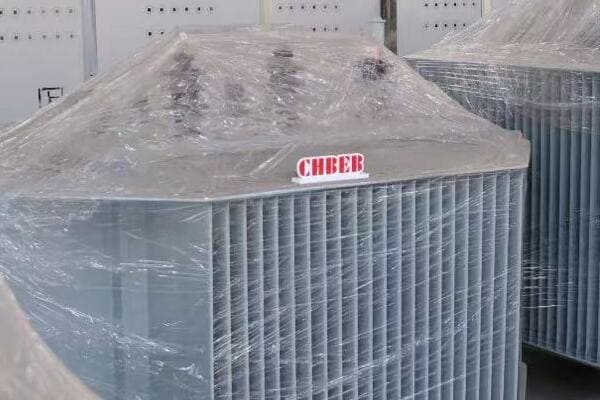
In this simple guide, we’ll explain what a house transformer is, how it works, where it’s located, and why it’s a critical piece of every neighborhood’s power system—even if you’ve never noticed it before. Whether you’re a homeowner curious about your electrical supply or just someone interested in how our modern infrastructure works, this article will shed light on an often-overlooked but crucial component of our daily lives.
What Is a House Transformer?
Have you ever seen those cylindrical metal cans on utility poles or green boxes on the street and wondered what they do? These are likely house transformers, but what exactly are they, and why are they so important for your home’s electricity?
A house transformer, also known as a distribution transformer, is an electrical device that converts high-voltage electricity from power lines to a lower voltage suitable for household use. It acts as a crucial intermediary between the power grid and your home’s electrical system, ensuring that the electricity entering your house is at a safe and usable level, typically 110V or 220V, depending on your location.
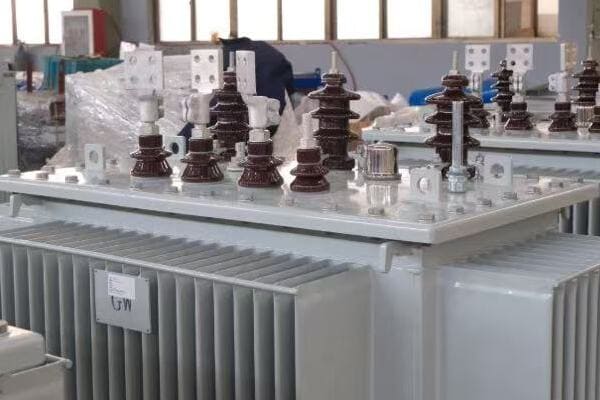
Key Components of a House Transformer
Let’s break down the main elements of a house transformer:
- Primary Winding
- Secondary Winding
- Core
- Insulation
- Cooling System
Primary Winding
This is where the high-voltage electricity enters the transformer:
- Connected to the main power lines
- Typically handles voltages between 4,000 to 34,500 volts
- Made of copper wire wound many times around the core
I remember visiting a transformer manufacturing plant and being amazed at the precision required in winding these coils. The number of turns in the primary winding is crucial for determining the voltage step-down ratio.
Secondary Winding
This is where the lower-voltage electricity exits the transformer:
- Connected to the residential power lines
- Outputs standard household voltages (110V/220V)
- Also made of copper, but with fewer turns than the primary winding
During a recent home renovation project, I had the chance to observe how the secondary winding connects to the main electrical panel of the house. It’s fascinating to see how this simple principle of fewer turns results in lower voltage.
Core
The heart of the transformer:
- Usually made of laminated steel sheets
- Provides a path for the magnetic field
- Crucial for the energy transfer between primary and secondary windings
Here’s a simple comparison of transformer cores:
| Core Type | Efficiency | Cost | Best For |
|---|---|---|---|
| Silicon Steel | High | Moderate | Most residential transformers |
| Amorphous Metal | Very High | Higher | Energy-efficient designs |
| Ferrite | Moderate | Lower | High-frequency applications |
Insulation
Keeping things safe and efficient:
- Prevents short circuits between windings
- Often oil-based in larger transformers
- Helps with cooling
Cooling System
Maintaining optimal operating temperature:
- Can be simple fins for air cooling in smaller transformers
- Oil-filled systems in larger units
- Critical for preventing overheating and maintaining efficiency
Key points about house transformers:
- They convert high voltage to safe household levels
- Consist of primary and secondary windings around a core
- Use electromagnetic induction to transfer energy
- Require proper insulation and cooling
- Come in different sizes depending on the number of homes served
In my experience, understanding the basics of house transformers can be incredibly useful. I once helped a neighbor diagnose a power issue by explaining how the transformer on our street worked. It turned out that the problem was on the utility’s side, at the transformer, rather than in their home wiring.
For example, during a recent community meeting about a new housing development, questions came up about power infrastructure. By explaining the role and capacity of house transformers, I was able to help residents understand why certain electrical upgrades were necessary for the neighborhood.
As we move on to discuss why homes need transformers, remember that these devices are the unsung heroes of our electrical system, working silently to ensure we have safe, usable power in our homes.
Why Do Homes Need a Transformer?
Have you ever plugged in a device and taken for granted that it just works? The reason your appliances function safely and don’t burst into flames is largely thanks to house transformers. But why exactly are these devices so crucial for every home?
Homes need transformers because the electricity transmitted over long distances is at much higher voltages than what household appliances can safely use. Transformers step down this high voltage (typically 4,000 to 34,500 volts) to the standard 110V or 220V used in homes. This conversion is essential for protecting your appliances, ensuring safety, and maintaining a consistent power supply. Without transformers, using electricity in homes would be dangerous and impractical.
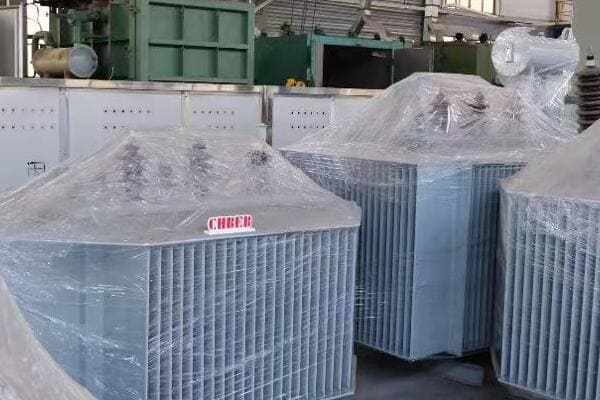
Key Reasons Homes Need Transformers
Let’s explore the main reasons why transformers are essential for residential power:
- Voltage Reduction for Safety
- Protection of Household Appliances
- Efficient Power Transmission
- Isolation from the Main Grid
- Voltage Regulation
Voltage Reduction for Safety
Making electricity safe for home use:
- High-voltage lines carry 4,000 to 34,500 volts
- Direct contact with such high voltage is extremely dangerous
- Transformers reduce this to safe 110V or 220V levels
I once witnessed a demonstration of the difference between grid-level and household voltages. The power of the high-voltage arc was terrifying, making me appreciate the crucial role of transformers in our daily safety.
Protection of Household Appliances
Ensuring your devices work properly:
- Most home appliances are designed for 110V or 220V
- Higher voltages would instantly destroy these devices
- Transformers provide the correct voltage for optimal operation
During a power surge in my neighborhood, homes with older transformers experienced some appliance damage. This incident highlighted how crucial properly functioning transformers are for protecting our valuable electronics.
Efficient Power Transmission
Balancing efficiency and usability:
- High voltage is more efficient for long-distance transmission
- Lower voltage is necessary for safe home use
- Transformers bridge this gap efficiently
Here’s a simple comparison of power transmission efficiency:
| Voltage Level | Transmission Efficiency | Safety for Home Use |
|---|---|---|
| High (>1000V) | Very High | Extremely Dangerous |
| Medium (1000V-100V) | Moderate | Unsafe for Direct Use |
| Low (110V/220V) | Lower | Safe for Home Use |
Isolation from the Main Grid
Providing an additional layer of protection:
- Transformers create electrical isolation between homes and the main grid
- This helps prevent grid disturbances from directly affecting homes
- Adds an extra safety barrier against electrical faults
Voltage Regulation
Maintaining consistent power supply:
- Transformers help stabilize voltage fluctuations
- This ensures a more consistent power supply to homes
- Protects appliances from voltage spikes and dips
Key points about why homes need transformers:
- They make high-voltage electricity safe for household use
- Protect appliances and devices from damage
- Allow for efficient long-distance power transmission
- Provide electrical isolation from the main grid
- Help regulate voltage for consistent power supply
In my experience, the importance of transformers becomes most apparent during power outages or electrical issues. I recall a situation where a neighborhood’s transformer failed during a heatwave. The sudden loss of air conditioning and refrigeration made everyone acutely aware of how much we rely on these often-overlooked devices.
For example, when I was consulting on a off-grid solar project for a remote community, explaining the role of transformers was crucial. We had to design a system that could step up the voltage from the solar panels for efficient transmission across the community, then step it down again for safe use in homes. This project really drove home how transformers are essential in both traditional and alternative energy systems.
As we move on to discuss where transformers are installed in residential areas, keep in mind that these devices are the silent guardians of our electrical systems, working constantly to keep our homes powered safely and efficiently.
Where Is the Transformer Installed in a Residential Area?
Have you ever noticed those green boxes on the sidewalk or cylindrical containers on utility poles and wondered what they are? Chances are, you’ve been walking past house transformers without even realizing it. But where exactly are these crucial devices installed, and why are they placed where they are?
House transformers are typically installed in one of two locations in residential areas: pole-mounted on utility poles or pad-mounted in green boxes on the ground. Pole-mounted transformers are common in older neighborhoods or areas with overhead power lines. Pad-mounted transformers are often found in newer developments with underground power distribution. The location is chosen based on factors like accessibility for maintenance, safety, and the layout of the power distribution network in the area.
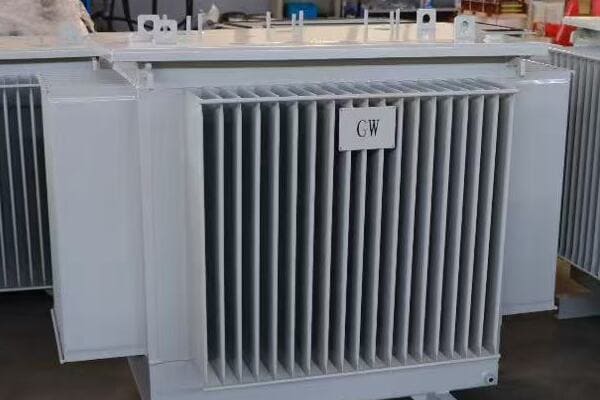
Common Locations for House Transformers
Let’s explore the main places you might find a house transformer:
- Pole-Mounted Transformers
- Pad-Mounted Transformers
- Underground Vaults
- Cluster Box Units
- Transformer Placement Considerations
Pole-Mounted Transformers
The traditional skyline fixture:
- Cylindrical containers mounted on utility poles
- Typically serve 1-3 homes in older neighborhoods
- Easy to spot and access for maintenance
I remember climbing a utility pole during my apprenticeship years ago. The view of a neighborhood from up there, next to a pole-mounted transformer, gave me a new appreciation for how our power infrastructure is laid out.
Pad-Mounted Transformers
The green boxes you’ve probably seen:
- Ground-level, often green metal enclosures
- Common in newer developments with underground power lines
- Can serve multiple homes or small apartment buildings
During a recent neighborhood walk, I counted the pad-mounted transformers and was surprised by how many there were. It’s fascinating how these unassuming boxes power entire blocks without most people noticing them.
Underground Vaults
Hidden beneath our feet:
- Used in dense urban areas or places with strict aesthetic requirements
- Completely underground, accessed through manholes
- Require special ventilation and flood protection
Here’s a comparison of different transformer installations:
| Installation Type | Visibility | Maintenance Access | Typical Location |
|---|---|---|---|
| Pole-Mounted | High | Easy | Older neighborhoods |
| Pad-Mounted | Moderate | Moderate | Newer developments |
| Underground | Low | Difficult | Urban centers |
Cluster Box Units
Serving multiple homes efficiently:
- Used in some townhouse or condominium complexes
- Single unit serves several closely-spaced homes
- Often integrated with other utility connections
Transformer Placement Considerations
Factors that determine where transformers are installed:
- Accessibility for maintenance and repairs
- Safety and clearance from buildings and traffic
- Aesthetic considerations and local regulations
- Protection from flooding and other environmental factors
Key points about transformer locations in residential areas:
- Pole-mounted transformers are common in areas with overhead power lines
- Pad-mounted transformers are typical in newer developments with underground lines
- Location choice depends on accessibility, safety, and local infrastructure
- Underground installations are used in urban areas with space constraints
- Placement must consider maintenance needs and environmental factors
In my experience, the location of transformers can significantly impact a neighborhood’s appearance and functionality. I once worked on a project to convert overhead lines to underground in a historic district. The switch from pole-mounted to pad-mounted transformers not only improved the area’s aesthetics but also increased power reliability during storms.
For example, in a recent consultation for a new suburban development, we had to carefully plan the placement of pad-mounted transformers. We needed to balance the technical requirements of power distribution with the developer’s desire for an uncluttered landscape. The solution involved strategically placing transformers near property lines and using landscaping to minimize their visual impact.
As we move on to discuss how house transformers work, remember that these devices are all around us, quietly ensuring our homes have the power we need, regardless of where they’re installed.
How Does a House Transformer Work?
Have you ever wondered about the magic that happens inside those mysterious boxes or cans that bring electricity to your home? The process might seem complex, but the basic principle behind how a house transformer works is surprisingly simple. So, how exactly does this device convert dangerous high-voltage electricity into something safe for your toaster and smartphone?
A house transformer works on the principle of electromagnetic induction. It uses two coils of wire (primary and secondary) wrapped around an iron core. When alternating current flows through the primary coil, it creates a changing magnetic field. This field induces a voltage in the secondary coil. By having fewer turns in the secondary coil than the primary, the voltage is stepped down to a lower, safer level for home use. This process occurs continuously, ensuring a constant supply of usable electricity to homes.
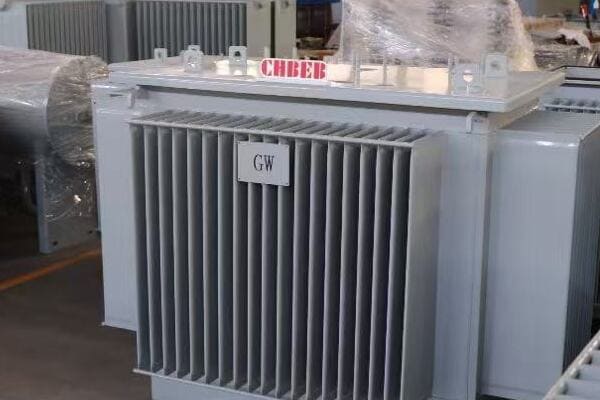
Key Components and Processes in Transformer Operation
Let’s break down how a house transformer works:
- Electromagnetic Induction
- Primary and Secondary Coils
- Core Function
- Voltage Step-Down Process
- Continuous Operation
Electromagnetic Induction
The fundamental principle:
- Discovered by Michael Faraday in 1831
- A changing magnetic field induces voltage in a nearby conductor
- Forms the basis of all transformer operation
I remember my first hands-on experiment with electromagnetic induction in college. Creating a simple transformer with just wire and a nail was a lightbulb moment that sparked my fascination with electrical engineering.
Primary and Secondary Coils
The heart of the transformer:
- Primary coil connected to high-voltage power lines
- Secondary coil connected to home electrical systems
- Number of turns in each coil determines voltage change
During a recent transformer repair, I had the chance to examine the coils up close. The precision in winding and the clear difference in the number of turns between primary and secondary coils were remarkable.
Core Function
Amplifying the magnetic effect:
- Usually made of laminated steel sheets
- Provides a path for magnetic flux
- Increases the efficiency of energy transfer
Here’s a simple comparison of core types:
| Core Type | Efficiency | Heat Generation | Cost |
|---|---|---|---|
| Air Core | Low | Low | Low |
| Iron Core | High | Moderate | Moderate |
| Ferrite Core | Moderate | Low | High |
Voltage Step-Down Process
How the magic happens:
- AC in primary coil creates alternating magnetic field
- Field induces voltage in secondary coil
- Fewer turns in secondary coil results in lower voltage
- Typical step-down: 7200V to 240V/120V
Continuous Operation
Keeping the lights on:
- Transformers work 24/7 without moving parts
- Efficiency typically above 95%
- Requires minimal maintenance
Key points about how house transformers work:
- They use electromagnetic induction to transfer energy
- The ratio of turns in primary and secondary coils determines voltage change
- The core enhances magnetic field strength and efficiency
- They continuously step down voltage for safe home use
- Operation is automatic and requires no user intervention
In my experience, understanding the working principle of transformers can be incredibly useful for troubleshooting. I once helped diagnose a power quality issue in a neighborhood by explaining to the utility company how harmonics from new electronic devices were affecting the transformer’s operation. This led to the installation of harmonic filters, improving power quality for everyone.
For example, during a recent educational workshop I conducted for a community group, I used a small demo transformer to illustrate the principle of voltage step-down. Seeing the light bulb glow brighter or dimmer as we changed the number of turns in the secondary coil really helped people grasp how transformers adjust voltage for different applications.
As we move on to discuss what happens when a house transformer fails, keep in mind that these devices, despite their seemingly simple operation, play a critical role in our daily lives. Their reliable function is something we often take for granted until something goes wrong.
What Happens If a House Transformer Fails?
Have you ever experienced a sudden blackout in your neighborhood, even when the rest of the town has powerHave you ever experienced a sudden blackout in your neighborhood, even when the rest of the town has power? This could be a sign of a house transformer failure. But what exactly happens when these crucial devices stop working, and how does it affect your daily life?
When a house transformer fails, it typically results in a localized power outage affecting several homes or a small area. Symptoms include sudden loss of electricity, flickering lights, or partial power in homes. Transformer failures can be caused by various factors such as lightning strikes, overloading, or equipment aging. The impact can range from a brief interruption to prolonged outages, depending on the severity of the failure and the utility company’s response time. Immediate action is usually required to restore power and prevent potential safety hazards.
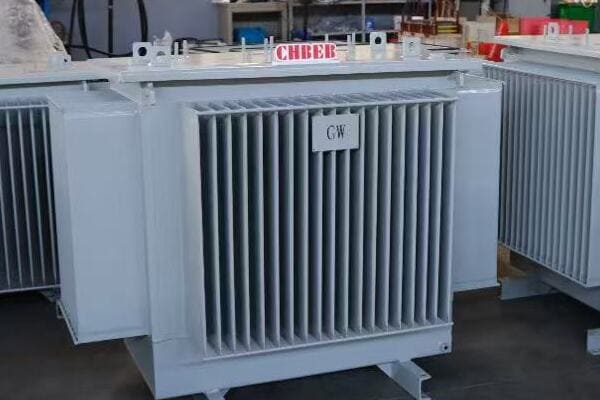
Key Aspects of House Transformer Failures
Let’s explore what happens during and after a transformer failure:
- Causes of Transformer Failures
- Immediate Effects on Homes
- Safety Concerns and Precautions
- Utility Company Response
- Power Restoration Process
Causes of Transformer Failures
Understanding why transformers fail:
- Lightning strikes and electrical surges
- Overloading due to increased power demand
- Equipment aging and wear
- Wildlife interference (e.g., squirrels or birds)
- Extreme weather conditions
I once investigated a transformer failure caused by a curious raccoon. It’s surprising how often small animals can cause big problems in our electrical infrastructure.
Immediate Effects on Homes
What you might experience:
- Complete loss of power in affected homes
- Flickering lights or partial power
- Damage to sensitive electronic equipment
- Tripped circuit breakers or blown fuses
During a recent heat wave, I witnessed a transformer failure that left an entire block without air conditioning. The experience highlighted how crucial these devices are for our comfort and safety.
Safety Concerns and Precautions
Staying safe during a transformer failure:
- Risk of electrical fires or explosions
- Potential for downed power lines
- Importance of staying away from failed transformers
- Need for proper handling of food in non-functioning refrigerators
Here’s a quick guide on what to do during a transformer failure:
| Action | Reason | Priority |
|---|---|---|
| Stay away from the transformer | Safety hazard | High |
| Report outage to utility company | Quick response | High |
| Unplug sensitive electronics | Prevent damage from power surges | Medium |
| Keep refrigerator closed | Preserve food | Medium |
| Use flashlights, not candles | Fire safety | Medium |
Utility Company Response
How power companies handle failures:
- Dispatch of emergency repair crews
- Assessment of damage and failure cause
- Implementation of temporary power solutions if needed
- Communication with affected customers
Power Restoration Process
Steps to get the lights back on:
- Replacement or repair of the failed transformer
- Testing of new equipment
- Gradual restoration of power to affected homes
- Follow-up checks to ensure stability
Key points about house transformer failures:
- They can cause localized power outages affecting multiple homes
- Failures have various causes, from weather to equipment aging
- Safety is a primary concern during and after a failure
- Utility companies respond quickly to assess and repair damage
- Power restoration is a careful process to ensure safety and stability
In my experience, the impact of a transformer failure can vary greatly depending on the response time and preparedness of the utility company. I recall a situation where a quick-thinking technician was able to reroute power through a backup transformer, minimizing downtime for a critical care facility in the affected area.
For example, during a recent community emergency preparedness meeting, I emphasized the importance of having a plan for extended power outages caused by transformer failures. We discussed backup power options, food safety measures, and communication strategies. This preparation proved invaluable when a major storm caused multiple transformer failures in the area a few months later.
As we conclude our discussion on house transformers, it’s clear that these devices play a crucial role in our daily lives, often unnoticed until something goes wrong. Understanding how they work and what happens when they fail can help us appreciate the complexity of our power infrastructure and be better prepared for potential disruptions.
FAQs About House Transformers
To address some common questions about house transformers:
-
What is the green box transformer near my house?
The green box near your house is likely a pad-mounted transformer. It serves the same function as pole-mounted transformers but is installed on the ground. These are common in areas with underground power lines and newer developments. They step down high voltage electricity to levels safe for home use. -
Is the transformer outside my home dangerous?
While transformers contain high voltage electricity, they are designed with safety in mind. The outer casing is securely locked and grounded to prevent accidental contact. However, you should never attempt to open, touch, or tamper with a transformer. Always maintain a safe distance, especially if you notice any signs of damage or malfunction. -
Does each house have its own transformer?
Not necessarily. In most residential areas, a single transformer serves multiple homes. The number of homes per transformer depends on factors like the transformer’s capacity and the power needs of the area. In dense urban areas, one transformer might serve an entire apartment building, while in suburban areas, it might serve 2-10 houses. -
Who owns and maintains the house transformer?
Typically, the local utility company owns and maintains house transformers. They are responsible for installation, repairs, and replacements. Homeowners are not responsible for transformer maintenance. If you notice any issues with a transformer near your home, you should contact your utility company immediately. -
Can a house transformer cause high electric bills?
A properly functioning transformer should not directly cause high electric bills. However, an old or malfunctioning transformer might operate less efficiently, potentially leading to some energy loss. If you suspect issues with your power supply or unusually high bills, it’s best to contact your utility company for an inspection.
Conclusion
House transformers are crucial components of our electrical infrastructure, silently working to ensure we have safe, usable power in our homes. They convert high-voltage electricity from the grid to lower, safer voltages for household use. Understanding their function, location, and potential issues can help us appreciate the complexity of our power systems and be better prepared for any electrical emergencies.
Thank you for joining me in this exploration of house transformers. Stay curious, stay informed, and let’s keep pushing the boundaries of what’s possible in power distribution and electrical engineering.
Free CHBEB Transformer Catalog Download
Get the full range of CHBEB transformers in one catalog.
Includes oil-immersed, dry-type, pad-mounted, and custom solutions.
Quick Message
Request A free quote
We'd like to work with you
- +86 15558785111
- chbebgroup@chbebpower.com
- +86 15558785111
What We Do
CHINA BEI ER BIAN (CHBEB) GROUP, with 218 million in registered capital, originated from Beijing Beierbian Transformer Group. Headquartered in Beijing for R&D, it operates major production bases in Nanjing and Yueqing, producing high-quality products.
Latest Product
address
BeiJing
No 3,RongJing East Road,BeiJing Economic Technological Development Area,BeiJing,China
JiangSu
No 7️Xiangfeng Road,Jiangning,NanJing,JiangSu,China
WenZhou
No.211, Wei 16 Road, Industrial Zone, Yueqing, Wenzhou, Zhejiang, China.
XiangYang Industrial Zone ,YueQing,WenZhou,ZheJiang,China
contact us
- chbebgroup@chbebpower.com
- +86 13057780111
- +86 13057780111
- +86 15558785111
Copyright © Bei Er Bian Group


